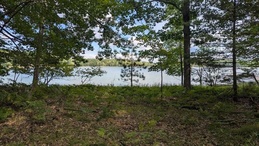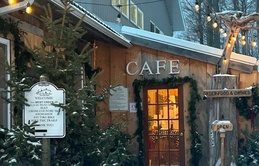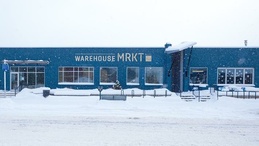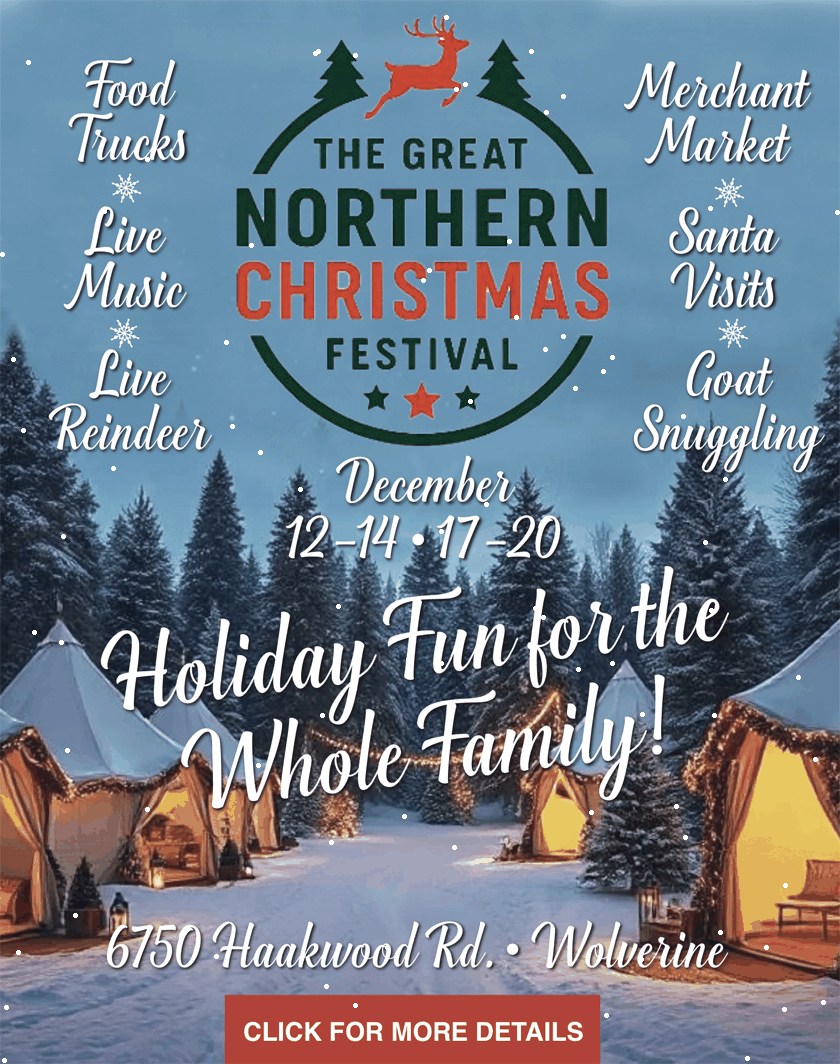
Foraging for Food
For Clay Bowers, a way of life
By Ross Boissoneau | Aug. 18, 2018
“Ever eat a pine tree?” asked naturalist Euell Gibbons in TV commercials for Post Grape Nuts cereal in the 1970s. Clay Bowers would have, and probably has. The Traverse City resident gathers the majority of the food his family eats — and not from the grocery store.
From berries to wild vegetables to edible invasives, Bowers is quick to praise wild foods. And eat them as well.
He also teaches foraging, with a new slate of classes kicking off Sept. 8 with a three-hour in-depth class. He was recently a presenter at the 5th Annual Great Lakes Foragers Gathering in June at Grass Lake, west of Ann Arbor. And on his website, NoMiForager.com, he recommends books for those interested in harvesting from the wild, aiming both at newbies, who perhaps only want to find morels, and at experts interested in lesser-known plants and where to find them.
The self-described plant nerd noted that learning about what he calls “our plant and fungal neighbors” has been a passion of his since childhood. But it’s become an obsession over the past decade.
Bowers said it’s really quite easy to forage. “Mushrooms are always the first thing on people’s minds” when they hear about foraging, he said. Second is a tie between berries and wild ramps, aka leeks. “I think those are absolutely a great starting place,” he said.
Bowers said another misconception is that you have to forage in the deep, dark woods. “I live in Traverse City and do a ton of foraging in this area.” Open meadows, lightly wooded area, and other areas common to the region are attractive to Bowers.
“I think there’s a deep ancestral connection” to nature, Bowers said. “A person using the landscape loves it and knows it better than the casual observer.” On his website he goes further: “Hiking, while definitely good for well-being, creates in us this sense of the forest being an art exhibit. When I go into the woods, I participate in the woods.”
He acknowledged the foraging thing has become somewhat trendy, but he’s not into trends or fads. “I don’t view it as being fascinating. At this point, it’s my life,” said Bowers. “I’m more in touch with plants because my emphasis is on using wild resources that are abundant.”
Bowers also wants to disabuse anyone of the notion that foragers are destroying the environment. “We want nature to be there. We want plants to continue their existence,” he said. “A deer hunter doesn’t want all the deer to go away.”
Charlie Snedeker, a similarly-inclined gatherer from downstate who visits this area frequently, said it’s perhaps more likely that that would occur when overzealous foragers decide to sell what they find for profit. “I think it’s great [that people want to harvest wild foods]”, he said. “The only thing that concerns me is when they get dollar signs in their eyes. They can decimate a field of wild ramps or milkweed. There’s got to be a balance.”
That’s not a problem for Bowers. He said whether gathering foods for oneself or for selling to others, the important thing is to learn how to do it safely, both for ourselves and for the environment, and then pass that knowledge along.
“We are going to have to challenge long-held beliefs that we ruin nature by being in it. I’m in favor of [harvesting] wild foods, but I think the future lies in licensing. I’m certified for gathering mushrooms.”
He went on to note that many foods, both wild and cultivated, are unharmed by a complete harvesting. “You can’t overharvest mushrooms, just like you can’t over-pick apples off a tree. But you can cut the tree down or destroy the habitat.”
Pictured above: Bowers with an armload of Reishi mushrooms, AKA Ganoderma tsugae.
Three Foods to Forage For
Plus three edible invasives
Interested in foraging for fun or feast? Bowers recommends starting with the following:
Blackberries – “There’s a ton of blackberry patches in the area — not black raspberries — blackberry is bigger and more robust, with no indentation” in the berry. Blackberries have huge canes up to 12 feet long, with giant thorns (ouch!). Look in old fields.
Purslane – It doesn’t invade the fields, woods or streams, but it does invade gardens. Think of it as a charter member of the farmaging category. “You don’t find it anywhere but tilled fields. It’s highly edible. Its paddle-shaped leaves have been studied [for] small but usable Omega 3.”
Hazelnuts – “Wild hazelnuts are about to ripen, though there are not too many of them in this area. Beaked hazelnuts are found all over northern Michigan. The southern end of the range is around here, but there are more in the Mackinac area and the U.P.”
Don’t stop there. The “Eat the Invaders” movement (EatTheInvaders.org) boasts adherents across the globe, and Bowers is eager to help.
Wild Parsnip – “If we really want to eat wild food and help the environment, wild parsnip is a counterpart of domestic parsnip. Take a shovel to a field and you can dig,” he said.
Autumn Olive – Despised by environmentalists for its aggressive proliferation, which negatively affects natural areas. Bowers suggests doing your part to diminish its impact. “That berry is super tasty and super good for you. And it’s really abundant.”
Garlic Mustard – This invasive plant spreads quickly through woodlots, outcompeting other plants, including tree seedlings. Worse, it produces compounds that can limit seed germination in other species. Even deer won’t eat it, but Bowers says go for it. “Garlic mustard is very edible,” and can be used raw in salads or in soups, marinades and dry rubs.
Trending

Welcoming the Winter Solstice: Rituals & Events for the Shortest Day of the Year
With the winter solstice quickly approaching, it’s hard not to notice how dark each day feels. Astronomically, this is… Read More >>
Camp Greilick Now Open!
It’s been a long road for the century-old Camp Greilick, which, after several dormant years, was acquired by Grand Tra… Read More >>
Men and Ugly Sweaters
Those two things don’t always go together, but on Dec. 19, you’ll see both out and about in Petoskey and Harbor … Read More >>


